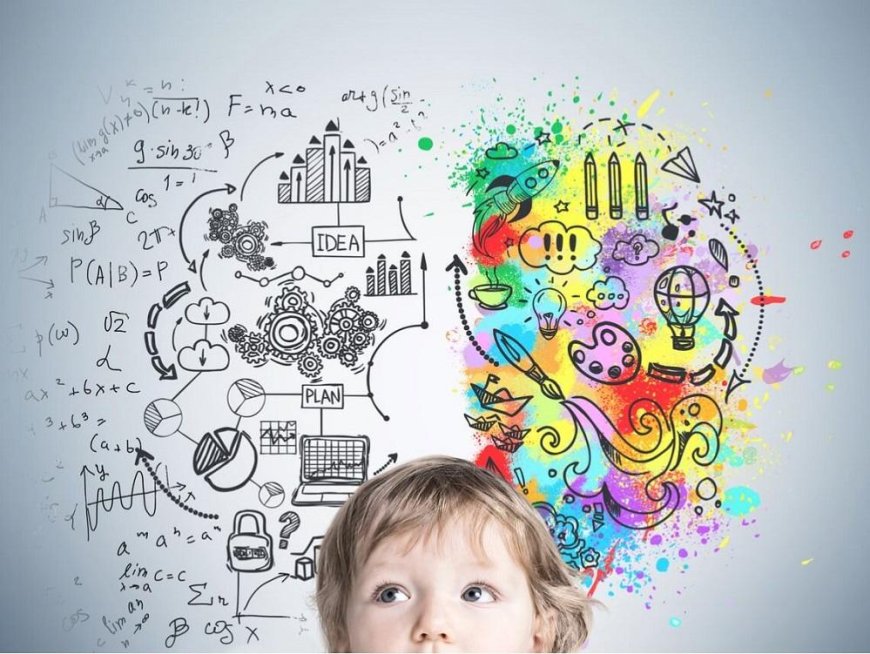Intellectual disability: definition and types
Intellectual disability - characterizes people who have less developed cognitive resources than what is normal for their age. This makes

Intellectual disability - characterizes people who have less developed cognitive resources than what is normal for their age. This makes learning difficult and requires more effort to communicate in specific contexts and try to get messages across. This type of disability is usually identified by the age of 18 and affects 1% of the world's population.
But it's important to remember that intellectual disability is not a mental illness, but rather a developmental disorder. All people with this type of disability are in fact similar to us: they have their own dreams, interests, likes and preferences. We must not stigmatize this disorder. What better way to avoid stigmas than to learn more about what intellectual disability is?
Intellectual functioning and adaptive behavior
There are different degrees of intellectual disability, each with its own difficulties. They create problems with reasoning, planning, problem solving, abstract thinking, and learning - all because of slow and incomplete cognitive learning.
Their adaptability can also be very limited, both conceptually and socially and practically. Thus, their ability to express themselves linguistically or to read and write is underdeveloped, as are their sense of responsibility and self-esteem.
In daily activities such as grooming, personal care and food preparation, the level of autonomy depends on the severity of the disability.
Impact on health and social interactions
Intellectual disability may be accompanied by some changes in an individual's physical and mental health. These, in turn, can affect other aspects of your well-being.
Additionally, it can affect communication, interaction and participation in social contacts. Intellectual and adaptive limitations of these people prevent them from participating normally in the life of the community. It affects all their environments: home, school, work and free time. In this way, intellectual disability affects a person's entire life.
The role of IQ
The IQ quotient by itself is not sufficient to diagnose intellectual disability. In addition to quantifying intelligence with IQ, it is necessary to make a deeper assessment of a person's intellectual functioning.
IQ is the relationship between a person's mental age and chronological age. The first age corresponds to intellectual development: how they cope intellectually compared to the average level. Chronological age is determined by biology.
It has been assumed that an IQ of less than 70 indicates an intellectual disability. If the index is above 130, it means the other extreme: exceptional intelligence. IQ also classifies the degree of intellectual disability.
Intellectual disability and its types
There are mild, moderate, severe and profound types of intellectual disability.
Mild (IQ 50-55 to 70)
85% of people with intellectual disabilities have a mild disability.
- Mental Abilities: mildly lowered abstract thinking, functional abilities, cognitive flexibility, and short-term memory.
- Social domain: immature social interactions that leave these individuals vulnerable to manipulation.
- Practical area: requiring supervision, guidance and help in carrying out everyday life tasks. This help is very important, especially in stressful situations.
- Children with this type are no different from children without a disability until they get older.
Must Read: The place of performing arts in education
Moderate (IQ from 35-40 to 50-55)
10% are mildly handicapped.
- Mental abilities: requiring constant help in completing daily activities. Sometimes it is even necessary for others to take over some of their responsibilities. With moderate supervision, they can learn self-care skills. They can perform unskilled or unskilled jobs, but always under supervision.
- Social field: When they communicate verbally, their language is less rich and complex than people without a disability. This means that they cannot correctly interpret certain social subtleties and have problems with establishing new relationships.
- Practical domain: with support and continuous instruction, they can develop certain skills and abilities.
Heavy (IQ from 20-25 to 35-40)
3-4% of people with intellectual disabilities have a severe disability.
- Mental abilities: very limited, especially in the case of numerical concepts. They need constant support in many areas.
- Social domain: their spoken language is very basic, sentences are grammatically simple, they also have limited vocabulary. They communicate very simply and focus on the present
- Practical area: requiring constant supervision in all daily tasks.
Deep (IQ between 20-25)
Although they are a minority (1% -2%), most of them are associated with a recognized neurological disease
- Mental abilities: clearly limited. They only think about the physical world and non-symbolic processes. Through instructions, they can gain certain skills, such as pointing at something. The associated movement and sensory problems often prevent the functional use of objects
- Social domain: questionable understanding of verbal and non-verbal communication. They express themselves in a very simple, mostly non-verbal way
- Practical domain: they are completely dependent in all areas. Only if they have no motor or sensory impairment can they participate in certain basic activities.
We need public support if we want to create an easier and more accessible environment for people with intellectual disabilities. Otherwise, these environmental constraints will only add to the difficulties they already face.
In any case, we should never forget that what matters first is the person, and only then his intellectual disability ... A person with intellectual disability has feelings, dreams and contributes to the functioning of the world, just like us.
